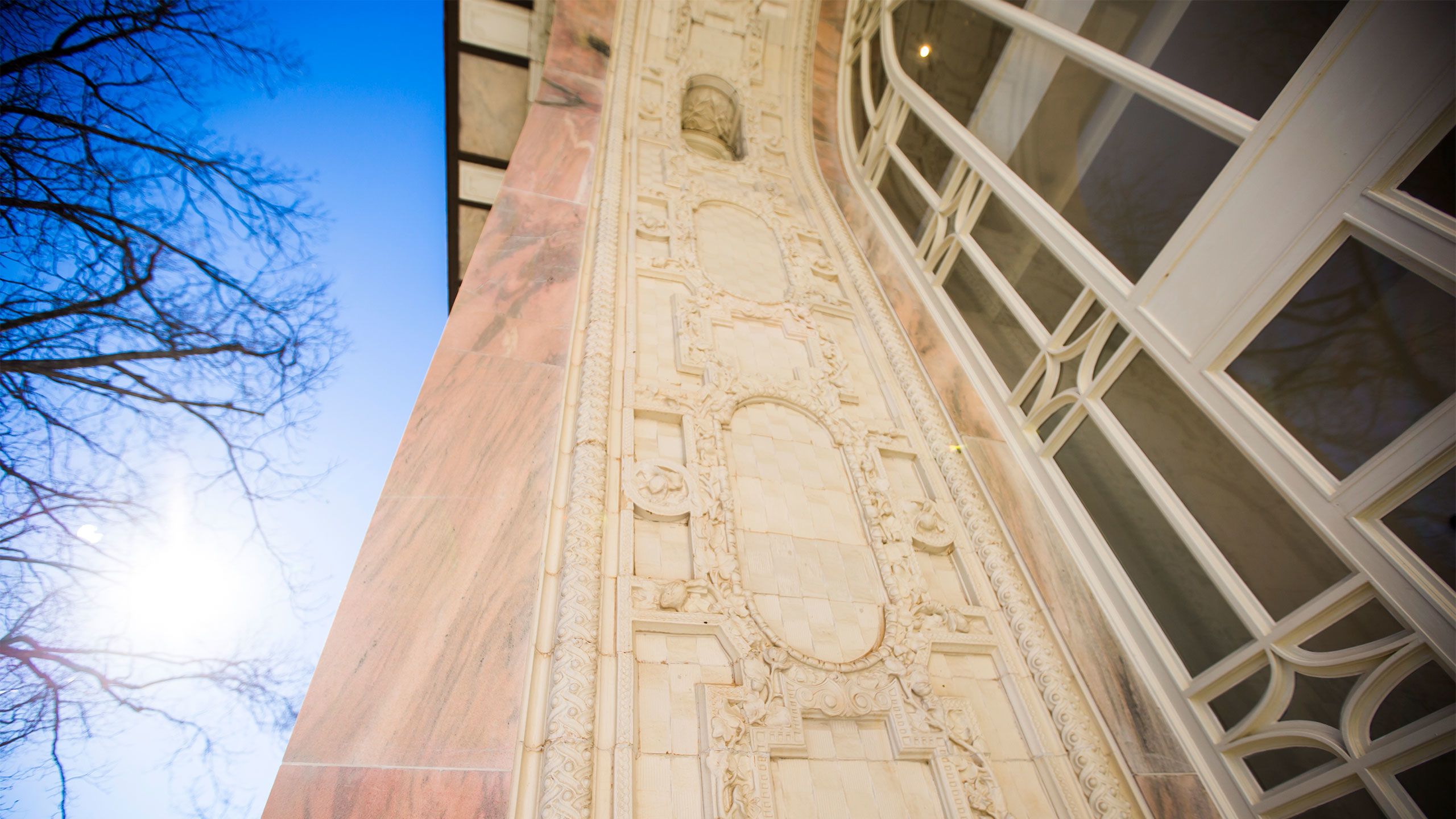EMORY UNIVERSITY
CONVOCATION
HALL
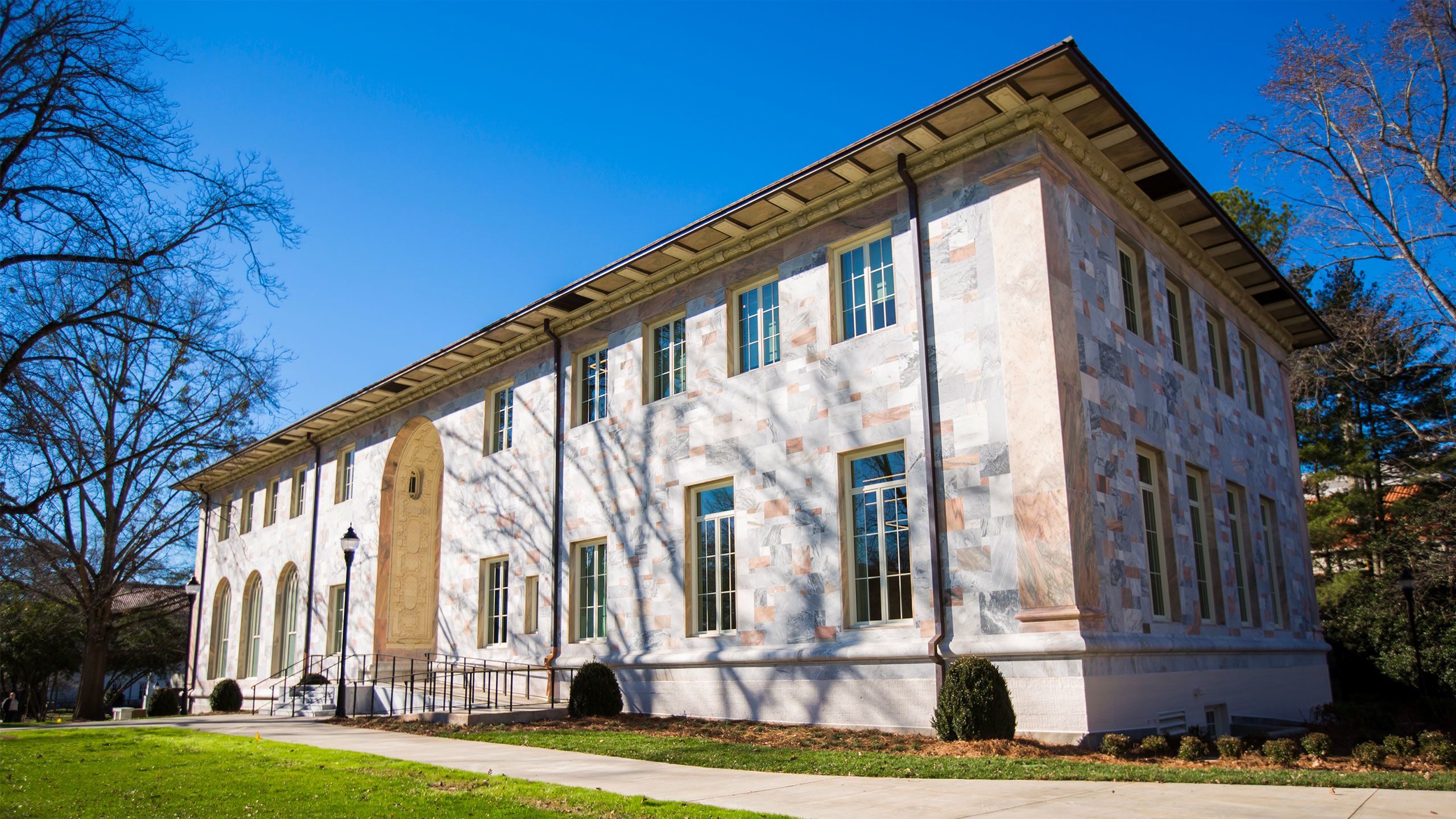
Constructed more than a century ago as one of the first two buildings on Emory University's Atlanta campus, Convocation Hall has been meticulously restored to serve once again as a hub of academic leadership and learning.
Originally known as the theology building, the structure was first completed in 1916 and was the first building to open on Emory’s main quadrangle. The renovation restores the historic building to its previous beauty while providing modern technological and design upgrades.
Home through the decades to university executives, faculty, libraries and even the campus post office, Convocation Hall now supports Emory’s mission through offices for a variety of university leaders, and through broad institutional uses including academic gatherings, trustee meetings and significant campus events.
The building provides space for the offices of the president, advancement and alumni engagement, business and administration, the vice president and secretary, general counsel, and communications and public affairs. The collaborative and flexible workspaces allow for greater cooperation among these central functions to advance the "One Emory" vision.
Rich history, bold future
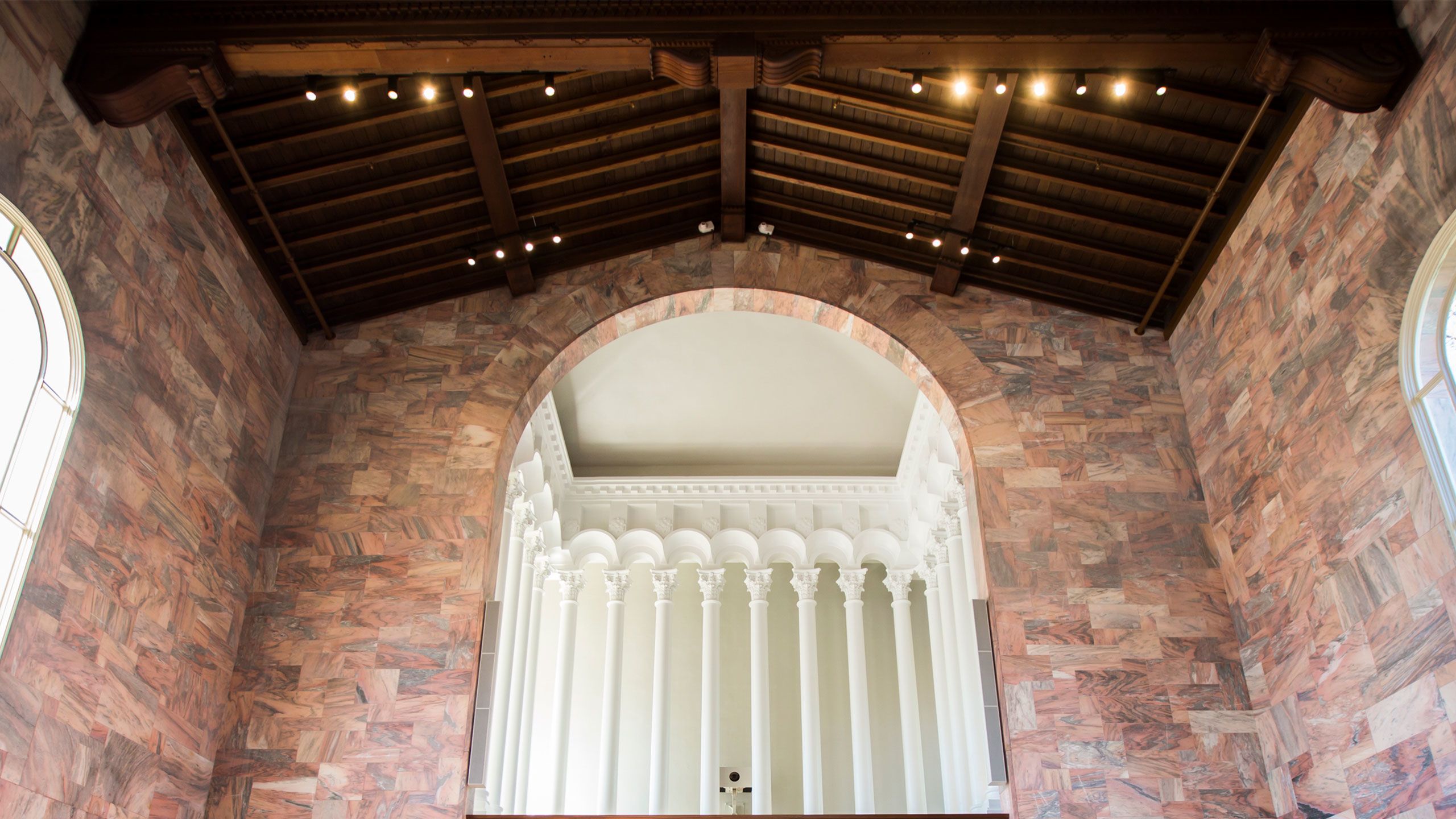
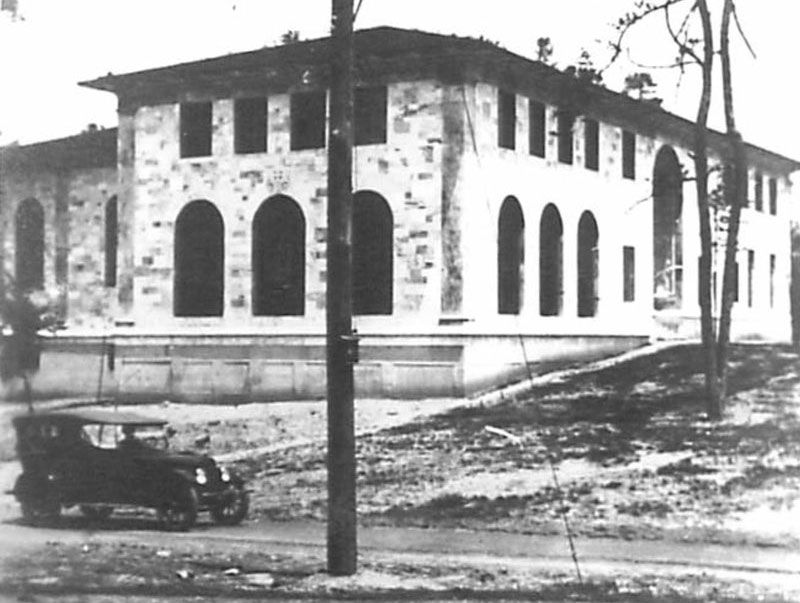
Theology Building, circa 1920. Photo courtesy Stuart A. Rose Manuscript, Archives and Rare Book Library.
Theology Building, circa 1920. Photo courtesy Stuart A. Rose Manuscript, Archives and Rare Book Library.
Emory College was founded by the Methodist Episcopal Church in 1836 in Oxford, Georgia, where Emory's Oxford College is now located. Asa Candler, founder of The Coca-Cola Company, offered seed money and donated land in Atlanta for the university to expand, and on Jan. 25, 1915, the Superior Court of DeKalb County granted a charter to Emory University.
What was then known as the theology building was completed in 1916 as one of the first buildings on Emory's Atlanta campus, notes Emory University Historian Gary Hauk. Originally, it housed the Candler School of Theology, the chancellor’s office and an academic library.
Designed by architect Henry Hornbostel, the building featured the Italian Renaissance style and pink and gray marble that defined the university's main quadrangle. Its “twin,” another Hornbostel creation that almost mirrors the theology building, is today known as Carlos Hall and resides across the quad.
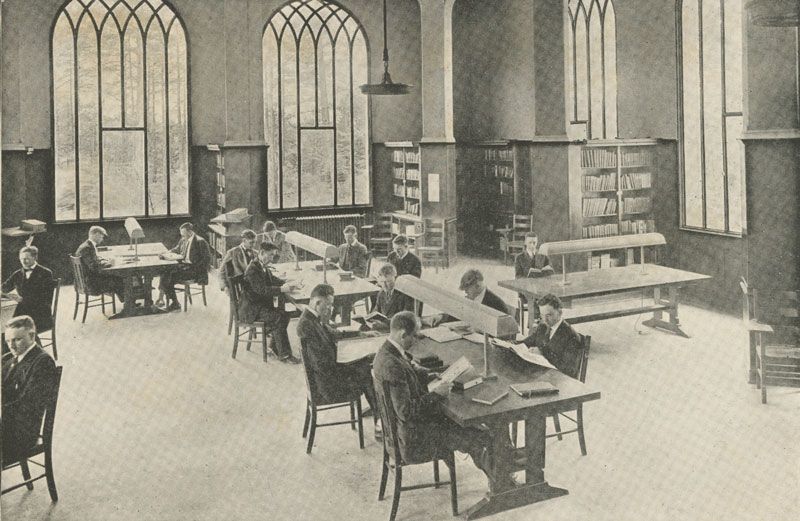
Studying in the Theology Building Reading Room, circa 1933. The renovated Reading Room now features tiered seating in a horseshoe shape to facilitate conversation during meetings and special events.
Studying in the Theology Building Reading Room, circa 1933. The renovated Reading Room now features tiered seating in a horseshoe shape to facilitate conversation during meetings and special events.
While the two buildings share key design elements, Hornbostel added subtle, unique architectural details that reflect their original uses and can still be seen today.
Tucked under the eaves of Convocation Hall are small ornamental carvings showing alternating religious images, reflecting its start as the home of the School of Theology; under the eaves of Carlos Hall, the carvings show the scales of justice and the Mosaic tablets of law, showing that it was the original home of the School of Law.
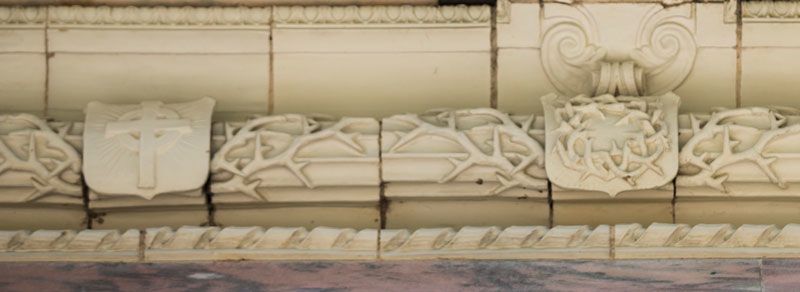
Carvings of crosses and the crown of thorns under the eaves mark Convocation Hall as the original home of Emory's theology school.
Carvings of crosses and the crown of thorns under the eaves mark Convocation Hall as the original home of Emory's theology school.
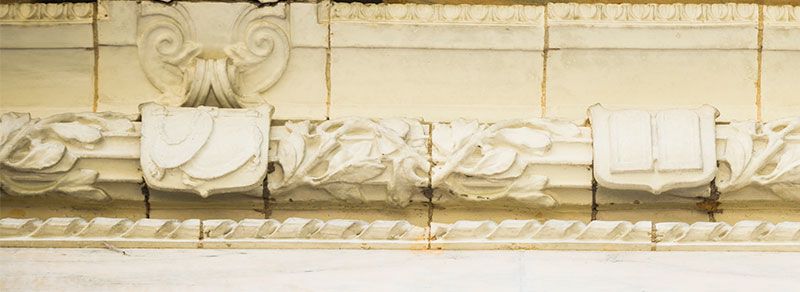
Carvings of scales and tablets mark Carlos Hall as the original home of Emory's law school.
Carvings of scales and tablets mark Carlos Hall as the original home of Emory's law school.
By the time Emory College arrived on campus in 1919, only two other academic buildings had been built. The scarcity of available space meant that through the years, the theology building also housed the college dean, the library, faculty offices, the post office and the Emory museum, among other uses.
In 1975, the Theology Library’s collection greatly expanded with the acquisition of more than 200,000 rare books; it was renamed the Pitts Theology Library in honor of Margaret A. Pitts and the Pitts Foundation’s assistance in purchasing the collection.
But as Pitts grew to become one of the premier theology libraries in North America and one of the most comprehensive in the world, it needed new space and new technology. So in 2014, Pitts moved to its own newly constructed home in the Candler School of Theology's new building, located just off the quadrangle — leaving the old space vacant and ripe for reconsideration.
Now, Convocation Hall follows in that tradition to serve once again as a space for strategic decisions and consequential conversations, the locus of executive action and scholarly reflection. The name "Convocation Hall" was chosen to celebrate this legacy.
The renovations modernize the building and create a series of spaces where the Emory community can come together to celebrate and advance knowledge. At the same time, the redesign also preserves and restores key architectural features, including the tall windows, marble walls and ornate wooden ceiling that defined the old chapel space — which is now ready to host special Emory gatherings.
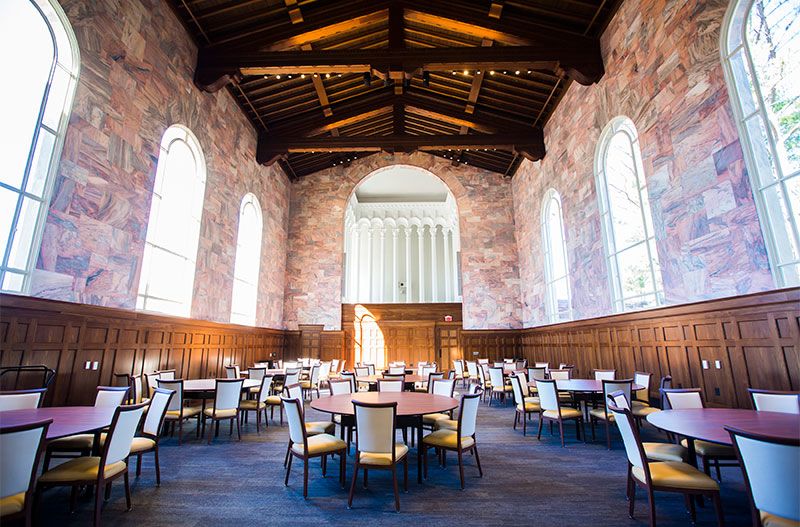
The original chapel, divided into multiple stories when the space served as the Pitts Theology Library, has been restored to its original grandeur to serve as an event space.
The original chapel, divided into multiple stories when the space served as the Pitts Theology Library, has been restored to its original grandeur to serve as an event space.
Learn more about the history and restoration of Convocation Hall through the Emory Historian's Blog.
Convocation Hall is now open for hosting select university events. Space requests may be submitted at emory.edu/events/convocationhall.
